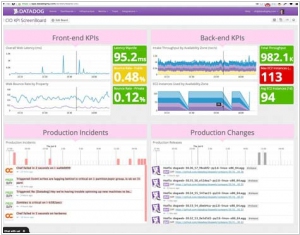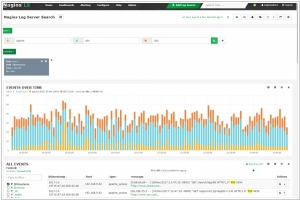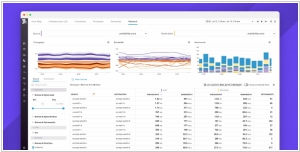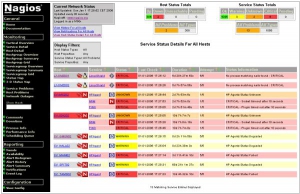Datadog vs Nagios
June 03, 2023 | Author: Michael Stromann
Datadog and Nagios are both widely used monitoring tools in the IT industry, but they differ in various aspects:
1. Scalability and Complexity: Datadog is a cloud-native monitoring platform that offers a highly scalable and flexible solution. It supports monitoring of cloud-based infrastructure, containers, applications, and network performance. Datadog provides an intuitive interface, extensive integrations, and automated features, making it easier for organizations to implement and manage monitoring at scale. Nagios, on the other hand, is an open-source monitoring tool that requires manual configuration and setup. It offers a more traditional and customizable approach, suitable for organizations with specific requirements and technical expertise.
2. Feature Set: Datadog provides a comprehensive set of features, including real-time monitoring, custom dashboards, anomaly detection, log management, and APM (Application Performance Monitoring). It offers a unified view of metrics, traces, and logs, enabling deep insights into application and infrastructure performance. Nagios focuses primarily on host and service monitoring, providing core functionalities such as monitoring alerts, checks, and notifications. Additional features, such as log monitoring and APM, can be added through plugins or extensions.
3. Ease of Use: Datadog's user interface is designed to be user-friendly and intuitive, providing a streamlined experience for users. It offers out-of-the-box integrations, pre-built dashboards, and drag-and-drop functionalities. Nagios, being a more manual setup, requires configuration through text-based configuration files. It may require more effort and technical knowledge to set up and maintain compared to Datadog.
4. Community and Support: Nagios has a large and active community of users, contributing to its extensive library of plugins and community-driven resources. This can be advantageous for organizations looking for specific integrations or customization options. Datadog, on the other hand, provides comprehensive documentation, technical support, and a dedicated customer success team to assist users with their monitoring needs.
5. Pricing: Datadog offers pricing based on a subscription model, with different tiers based on the number of monitored hosts or containers and the range of features required. Nagios, being open source, is free to use; however, organizations may need to invest in resources to set up, configure, and maintain the system.
See also: Top 10 IT Monitoring software
1. Scalability and Complexity: Datadog is a cloud-native monitoring platform that offers a highly scalable and flexible solution. It supports monitoring of cloud-based infrastructure, containers, applications, and network performance. Datadog provides an intuitive interface, extensive integrations, and automated features, making it easier for organizations to implement and manage monitoring at scale. Nagios, on the other hand, is an open-source monitoring tool that requires manual configuration and setup. It offers a more traditional and customizable approach, suitable for organizations with specific requirements and technical expertise.
2. Feature Set: Datadog provides a comprehensive set of features, including real-time monitoring, custom dashboards, anomaly detection, log management, and APM (Application Performance Monitoring). It offers a unified view of metrics, traces, and logs, enabling deep insights into application and infrastructure performance. Nagios focuses primarily on host and service monitoring, providing core functionalities such as monitoring alerts, checks, and notifications. Additional features, such as log monitoring and APM, can be added through plugins or extensions.
3. Ease of Use: Datadog's user interface is designed to be user-friendly and intuitive, providing a streamlined experience for users. It offers out-of-the-box integrations, pre-built dashboards, and drag-and-drop functionalities. Nagios, being a more manual setup, requires configuration through text-based configuration files. It may require more effort and technical knowledge to set up and maintain compared to Datadog.
4. Community and Support: Nagios has a large and active community of users, contributing to its extensive library of plugins and community-driven resources. This can be advantageous for organizations looking for specific integrations or customization options. Datadog, on the other hand, provides comprehensive documentation, technical support, and a dedicated customer success team to assist users with their monitoring needs.
5. Pricing: Datadog offers pricing based on a subscription model, with different tiers based on the number of monitored hosts or containers and the range of features required. Nagios, being open source, is free to use; however, organizations may need to invest in resources to set up, configure, and maintain the system.
See also: Top 10 IT Monitoring software
Datadog vs Nagios in our news:
2015. Cloud monitoring service Datadog fetched $31M

Datadog, a platform that enables companies to monitor the performance of their diverse cloud deployments, has secured a new round of Series C funding amounting to $31 million. With notable customers such as Netflix, Spotify, EA, and Mercadolibre, the company has expanded its workforce from 25 employees last year to 75 employees presently. Moreover, Datadog has ambitious plans to double or even triple its headcount in the coming year. While facing competition from rivals like Boundary, Server Density, and Stackdriver (acquired by Google last year), Datadog continues to provide its unique value proposition.
2014. Nagios launched log management solution

Nagios has introduced Nagios Log Server, a robust enterprise-level solution for monitoring and managing logs. This innovative offering empowers organizations to effortlessly view, sort, and configure logs from any source within their network. By augmenting Nagios' existing network management solutions, Log Server equips users with the capability to thoroughly analyze network events, logs, and performance benchmarks. The introduction of Nagios Log Server simplifies the management of network log data, enabling users to swiftly set up monitoring for their logs using configuration wizards. With a centralized dashboard and user-friendly management interface, Log Server facilitates seamless oversight and detailed examination of infrastructure issues, network errors, and log events.




